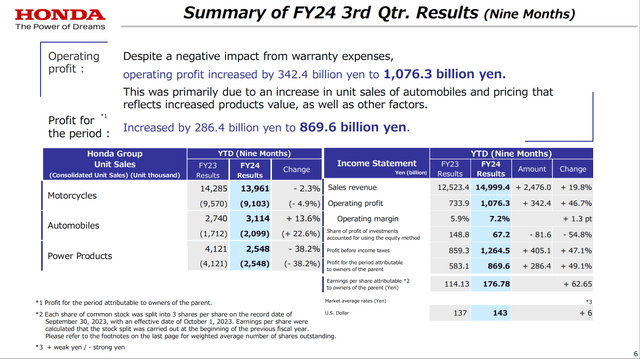
Intel’s weak quarterly outlook has led to a significant plunge in its stock value. Despite the hype surrounding artificial intelligence (AI) and the potential for Intel to provide chips for AI applications, the company has struggled to capitalize on this opportunity. While Intel’s stock had surged about 50% since its third-quarter earnings, it fell about 11% after hours due to its lower-than-expected forecast for the first quarter. In contrast, Nvidia has been thriving in the data center space with its graphics unit processors designed for AI training and inference applications. Intel’s Chief Financial Officer, Dave Zinsner, remains optimistic about the company’s AI prospects, but some analysts are skeptical and believe there are better investments in AI technology. It seems that Intel’s AI story still has a long way to go before it can deliver concrete results.
Intel’s Weak Quarterly Outlook Leads to Stock Plunge
Introduction
Intel Corporation’s shares experienced a significant decline after the company provided a disappointing quarterly outlook. The weak forecast included an anticipated decline in Intel’s data-center business, which has yet to successfully capitalize on the potential of artificial intelligence (AI). This article will explore the background of Intel’s stock surge based on AI potential, Nvidia’s dominance in the data-center business, the upcoming Gaudi chip from Intel, and skepticism surrounding Intel’s AI opportunity. It will also analyze the impact of Intel’s weak quarterly outlook on the company’s stock and highlight the lessons learned from the situation.
Background
Intel stock surge on AI potential
After Intel’s third-quarter earnings, the company’s stock surged by approximately 50% due to the potential of its chips in the field of artificial intelligence. Analysts believed that Intel could represent an “under-the-radar AI opportunity.” The market had high hopes for Intel’s ability to provide AI-related technology.
Nvidia’s dominance in data-center business
However, Nvidia Corporation had already established a dominant position in the data-center business with its graphics unit processors (GPUs) designed for AI training and inference applications. In its fiscal third quarter, Nvidia’s data-center business experienced significant growth of nearly 280%, driven by a continuous demand for its GPUs in accelerating AI applications.
Intel’s upcoming Gaudi chip
Intel hoped to compete with Nvidia by introducing its accelerator product line, codenamed Gaudi. The first iteration of this chip had a $2 billion pipeline associated with it. The company expected that the next iteration, Gaudi 3, would be launched sometime in 2024. However, Intel’s CEO did not provide any specific timing during the announcement.
Skepticism around Intel’s AI opportunity
Despite the optimistic outlook for Intel’s AI potential, some analysts remained skeptical. Gene Munster, a managing partner at Deep Water Asset Management, expressed doubts about Intel’s ability to achieve significant gains from AI. He suggested that there are better opportunities available to invest in the AI silicon market. Additionally, some analysts believed that Intel’s new products were being released at a slower-than-expected pace, while others highlighted software as a bottleneck in the company’s progress.
Intel’s Weak Quarterly Outlook
Disappointing forecast for Q1
Intel’s weak quarterly outlook specifically indicated a double-digit decline in the company’s data-center business during the first quarter. This forecast disappointed investors and contributed to a decline in confidence in Intel’s ability to deliver strong financial performance.
Anticipated decline in data-center business
The decline in Intel’s data-center business was a significant factor contributing to the weak quarterly outlook. Nvidia’s strong presence and continuous demand for its GPUs in the data-center market resulted in a shift of wallet-share away from Intel. The company faced challenges in effectively competing with Nvidia’s offerings.
Slow product ramp and software bottleneck
Analysts raised concerns about a slow product ramp at Intel. The company failed to meet the market’s expectations in terms of the pace of its product releases. Additionally, software was identified as a bottleneck in Intel’s progress in the AI space. These factors further undermined confidence in Intel’s ability to fully leverage its AI opportunity.
Opportunity in the PC space
Despite the challenges in the data-center market, Intel saw potential in the PC space. The company believed that AI-ready PCs equipped with Intel chips, capable of performing AI computations on the device itself instead of relying on the cloud, would gain traction starting in the second quarter of 2024 and continue throughout the second half of the year. Intel planned to capitalize on this opportunity to drive growth and improve its financial performance.
Impact on Intel’s Stock
Stock plummeted by 11% after hours
Following Intel’s announcement of a weak quarterly outlook, the company’s stock plummeted by approximately 11% after hours. Investors reacted negatively to the news, reflecting their disappointment in Intel’s performance and acknowledging the challenges the company faced in the AI market.
Investors got ahead of themselves on Intel’s AI potential
The significant decline in Intel’s stock value served as a reminder that investors had gotten ahead of themselves regarding the company’s AI potential. The market’s initial enthusiasm and high expectations for Intel’s AI story did not align with the concrete numbers presented in Intel’s weak quarterly outlook. This situation highlighted the need for caution and a more realistic assessment of companies’ AI prospects.
Lessons Learned
Hope surrounding AI versus concrete numbers
Intel’s weak quarterly outlook underscored the disparity between the hope and excitement surrounding AI technology and the actual financial performance of companies involved in the AI space. Investors must avoid being driven solely by optimism and should consider tangible results and financial figures when evaluating investment opportunities tied to AI. The situation with Intel served as a cautionary tale, reminding investors that the AI market is still evolving, and not every company will achieve immediate success in this field. Prudent decision-making requires a careful assessment of concrete numbers and a realistic evaluation of companies’ abilities to deliver meaningful AI-driven results.

RELATED POSTS
View all






